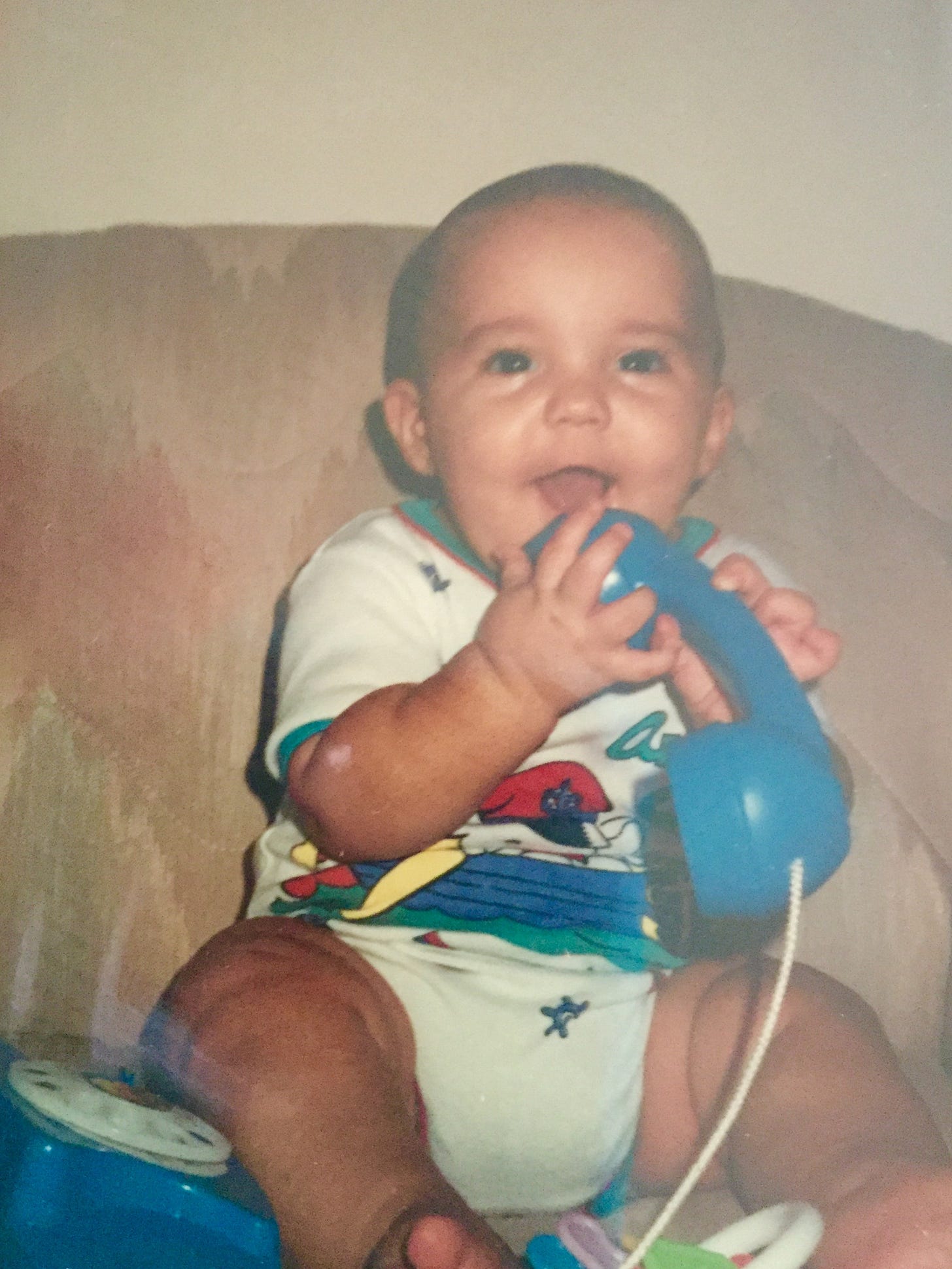Behind the Scenes of My AI Powered Writing Process ✍️
Quick confession: Yes, I regularly use both ChatGPT and Claude together in my workflow. Corporate rivalry? Not in my writing process 😂
Ever wondered how I turn a blank page into a polished Substack post? 🤔 Here's a peek at my multi-step workflow—part AI magic ✨, part human sweat 💦, and a dash of nostalgia 📸.
1. Brain-Dump with ChatGPT 🧠
I kick off every article by asking ChatGPT for a quick first draft. Why? It feels free-wheeling and creative, almost like brainstorming with a writing partner. I literally dump all my half-formed thoughts—no worries about grammar, structure, or coherence. It's a "stream of consciousness" moment on steroids. 🚀
Pro: Rapidly surfaces ideas I might've never thought of. 💡
Con: It sometimes goes Rogue™—hallucinating facts or veering off into unrelated tangents. 🙃
2. Round Two: Filling the Holes 🧩
Once that rough draft is in hand, I read it over and prompt ChatGPT again—this time asking for any missing angles or deeper insights. Think of it as asking a colleague, "Hey, what am I forgetting here?" 🤔
By the end of this step, I have a more complete—but still rough—skeleton of my piece. 🦴
3. Early Edits in Google Docs 📝
I export that draft into Google Docs (sorry, Canvas). There's just no replacing Google's track-changes, comments, and ease of navigation. Here, I:
Clean up grammar and typos ✓
Reorder paragraphs for logical flow 🔄
Trim redundancies and tighten language ✂️
This phase is quick—just enough to make the content coherent before the heavy lifting. 💪
4. Heavy Lifting with Claude 🏋️♂️
Now comes my secret weapon: Claude. I feed the polished rough draft to Claude and ask it to streamline and structure the article. What I love is that Claude:
Clearly explains every change it makes 👀
Provides rationales so I understand the "why" behind its edits 🧐
Generates a checklist of tweaks, making my review lightning fast ⚡
I trust Claude here more than other tools because of that transparency—plus, it actually makes me a better writer over time. 📈
5. Generating Visuals 📊
Next, I loop back to both ChatGPT and Claude for any visuals—tables, charts, or simple diagrams. It's still hit-or-miss. Sometimes I get exactly what I want, other times... let's just say the data points float in mid-air. 😅 Prompting skills are key here, and this is an area I'm always refining. 🔍
Here I used Sora to create this image of robots writing. I love the concept of them using actual ink because honestly the quality of the writing AI models are producing is pretty incredible.
6. The Final Touch: A Dreamy Photo 🌈
Every post needs personality, so I end with a fun photo—usually of me as a kid. Why? Because:
"We all dreamed boundlessly as kids. With AI now a reality, it's time to recapture some of that wonder." ✨
That tangible piece of nostalgia reminds readers—and myself—to stay curious and imaginative. 🧒💭
Calling all current and future subscribers! Baby Rodolfo demands your attention please!
7. Implications for AI PMs 🤖👨💼
As a Product Manager working with AI, this process has taught me several core lessons:
Trust through transparency. 🔍 I lean on Claude in later editing stages because its design clearly communicates what changes it's making and why. That transparency builds trust—critical when you're shipping features that might reshape workflows or customer experiences.
Model agnosticism as a strength. 💪 Since this is my side project, I don't sweat brand loyalty. Instead, I evaluate each model's strengths and stitch together the best parts of ChatGPT and Claude to achieve my goals. If you want to excel as an AI PM, you need to constantly benchmark tools, understand their trade-offs, and architect workflows that harness multiple models where they shine.
Competitive benchmarking. 📊 Treat competitor AI products as living case studies—regularly explore their capabilities to understand where your model outperforms and where it falls short. This ongoing audit helps you prioritize improvements and stay ahead in a rapidly evolving landscape.
Human-centric prompting practice. 🧠 Use prompting in your personal life—whether planning vacations, drafting emails, or brainstorming hobby projects—to uncover both limitations and hidden opportunities. Hands-on practice outside work sharpens your sense for real-world user needs and sparks ideas you can bring back to your product roadmap.
Wrapping Up 🎁
And that's it: from raw brain dump to a fully-fledged Substack post, powered by a tag-team of ChatGPT and Claude, polished by my own edits, and sprinkled with a pinch of nostalgia. ✨
What about you? How do you use AI in your writing (or your product development), and where do you draw the line between automation and human touch? 🤖✋ Hit reply—I'd love to hear your process.
If you enjoyed this peek behind the curtain, consider subscribing and sharing with a friend. 🙏 Let's keep learning (and dreaming) together. 💫
This Week’s Extra 10%!
Really loved this video from
’s podcast featuring ! If you can’t watch it, here’s my favorite takeaway = the Most Obvious Objection (MOO) rule. Whenever you’re communicating think proactively about the most obvious objection because it’s super likely to come up!
Legal Disclaimer
The views and opinions expressed in this content are my own and do not reflect the views, opinions, or positions of my current or former employers. This content is shared for educational and informational purposes only.
Keywords: AI writing workflow, ChatGPT and Claude, content creation process, AI-assisted writing, product management, Substack publishing, AI tools comparison, writing productivity, content strategy, AI transparency, model benchmarking, human-AI collaboration, writing automation, content editing, AI prompting, digital storytelling





